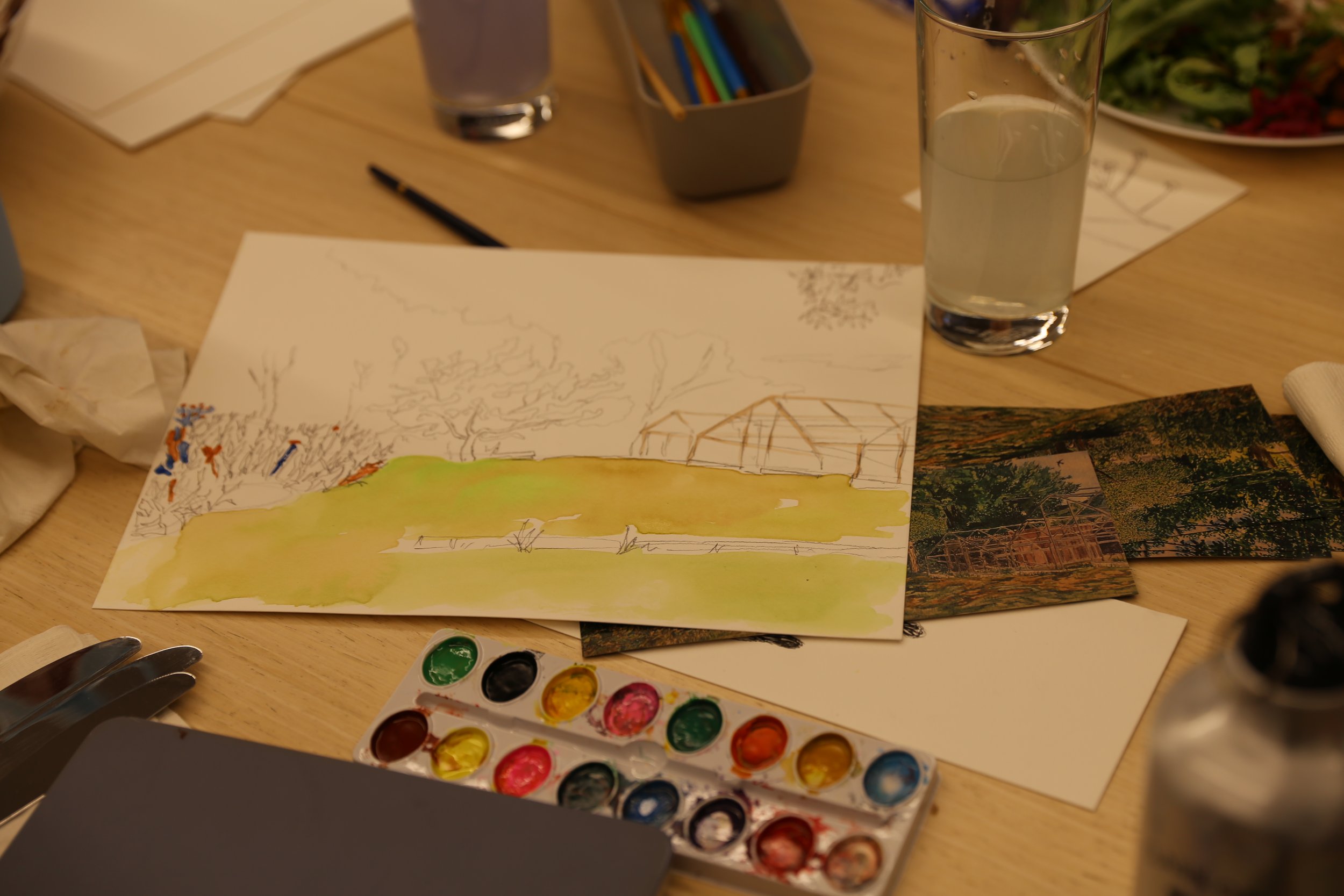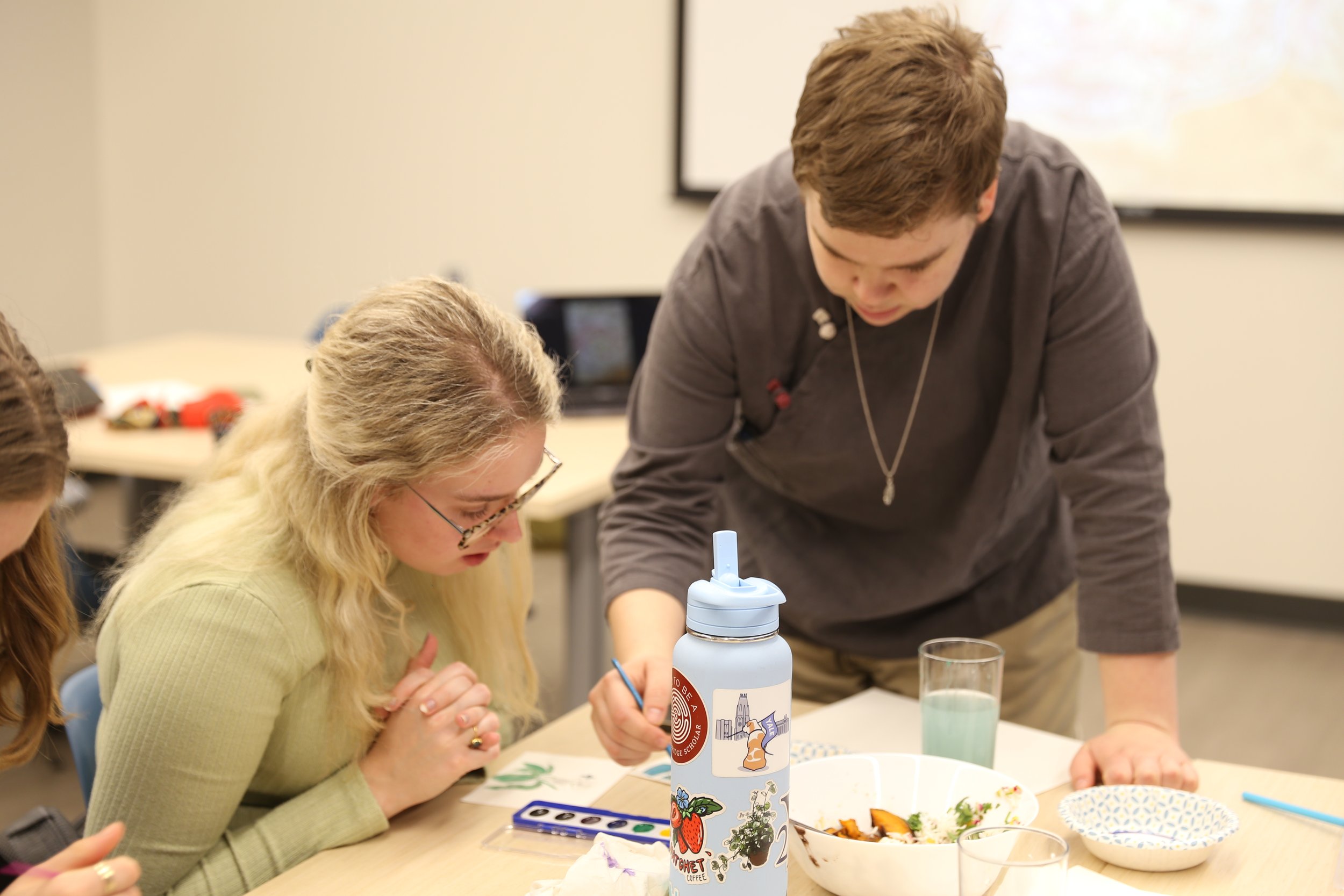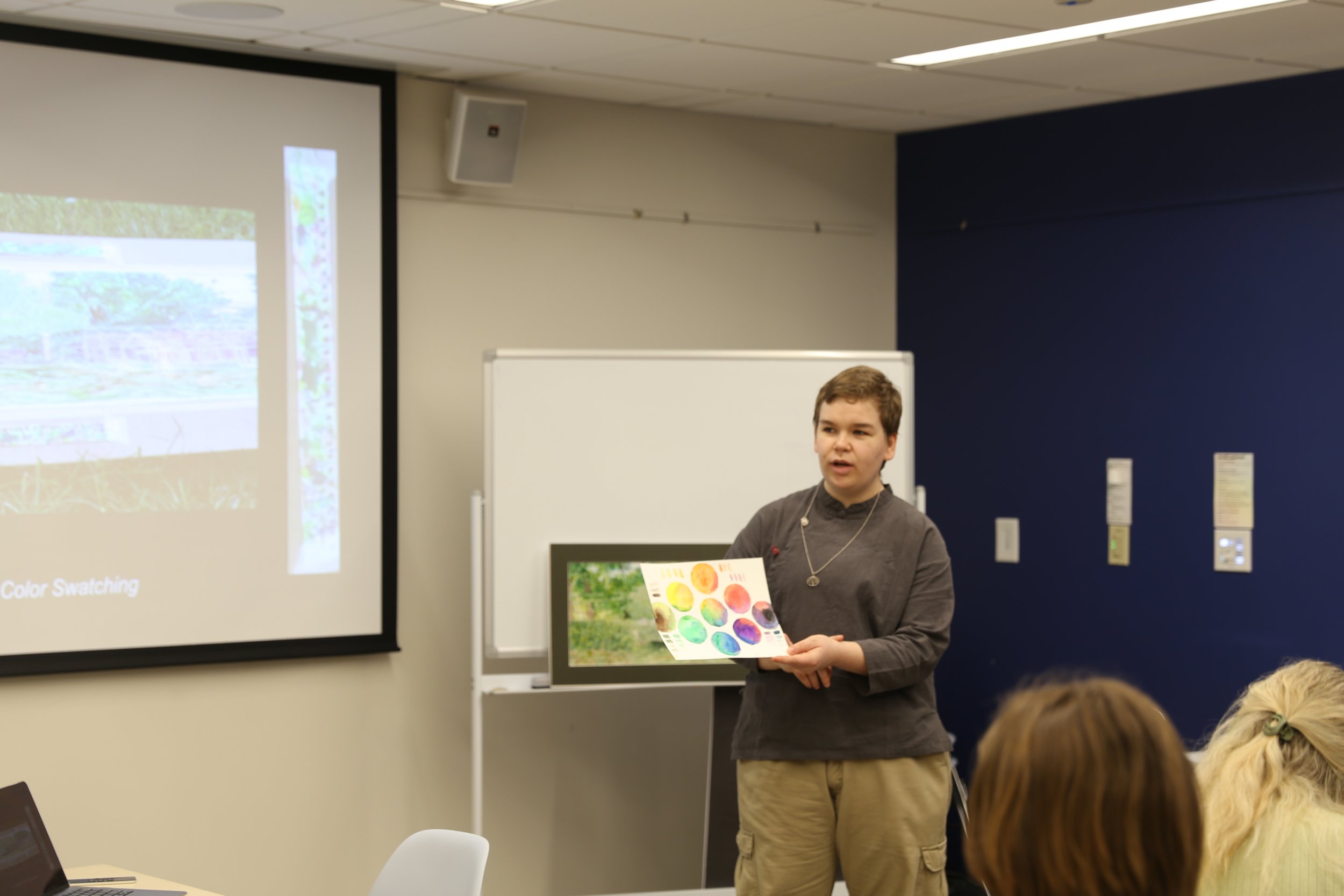


On Friday, March 3, students gathered in the Office of LGBTQ Resources over steaming bowls of salad, rice, black beans, cheddar cheese, and salsa, talking midterms, summer plans, and the community’s eager anticipation to return to the Old Acre this spring. The meal held a special significance for this week’s k2k speaker Eli White ’25, who interned on the Yale Farm last summer, helping to grow the beans that the community enjoyed.
In addition to farm work, Eli spent a significant portion of their summer rendering the Old Acre in water color paint. In their presentation, titled “Thinking with Paint,” Eli discussed the primary theme that guided their work: beauty, and the meaning of the word beyond a visual sense. Eli argued that the beauty of food and agriculture is about more than aesthetics; to Eli, beauty is deeply interconnected with concepts of joy and sacredness. The central argument of Eli’s project is that the beauty of places matters, and that aesthetics are something that must be expressed, not qualified.
Eli took a watercolor class last spring and learned about concepts of balance in painting. They expressed how art can become a tool of cultural and historical storytelling, and shared their fascination with the “Solar punk aesthetic movement,” which utilizes narratives of the future that bring hope. To Eli, questions of beauty are related to issues of justice and the experiences that make life meaningful.
Eli explained that they chose watercolor as their medium because it is highly portable. They spent the summer practicing painting from life, perched in different spots around the Farm. Eli said that painting from life is not about cementing memories, but about learning, and the experience of looking.
They described the process of their culminating work “The Liberty Apple Tree,” a large watercolor work which took a whole month to complete. Eli worked from the same spot on the Old Acre, detailing the titular tree, the grasses, the hoop houses, and the birds that would fly in and out of frame. As Eli worked from the left side of the paper to the right, they chronicled the change in colors and tones over the weeks. When scanning across the page, you can see the colors become more dried out, mirroring the progression of summer and of Eli’s work. The painting now hangs in the YSFP office to foster a “collective sense of purpose,” in Eli’s words.
In a memorable moment, Eli said that watercolor has modern form and lends itself to transience—“memories that are gone as they are arriving.”
Eli spoke of their experience growing up in the Southwest, and how their project helped them explore personal histories of growing up in agriculture environments.
Eli’s experience practicing watercolor techniques taught them that “things are less about talent and more about practice and care.” Eli tried to discard ideas of right and wrong and focus on play; they also tried to bring this mentality in their farmwork.
After Eli’s presentation, students stayed to ask questions, eat, and paint their own watercolors. In addition to personal paintings, students passed around a community painting, filling in with color a sketch Eli had made of the Farm.
It was a wonderful afternoon of learning, reflection, and creativity. To view Eli’s artwork and read more about Eli’s experience this summer in their own words, we encourage you to read this Voices piece.
There will be no knead 2 know this Friday. After spring break, we’ll be back on the Farm! Looking forward to seeing you then. Photos from the event can be viewed here.
